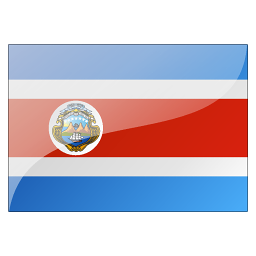



Om Costa Rica är ett himmelrike för djurälskare är Manuel Antonio Edens lustgård, skriver Vagabonds webbredaktör. Här berättar hon om en av hennes absoluta favoritplatser i världen.

One of Costa Rica's most isolated destinations, Bahía Drake (drah-kay) is a veritable Lost World, bordered by Parque Nacional Corcovado to the south. In the rainforest canopy, howler monkeys greet the rising sun with their haunting bellows, while pairs of macaws soar between the treetops, filling the air with their cacophonous squawking. Offshore in the bay, pods of migrating dolphins glide through turquoise waters near the beautiful Isla del Caño marine reserve.

South of Quepos, the well-trodden central Pacific tourist trail begins to taper off, evoking the feel of the Costa Rica of yesteryear – surf shacks and empty beaches, roadside ceviche vendors and a little more space. Intrepid travelers can have their pick of any number of deserted beaches and great surf spots. The region is also home to the great bulk of Costa Rica’s African-palm-oil industry, which should be immediately obvious after the few dozen miles of endless plantations lining the sides of the Costanera.

If Patrick and Wingnut from the 1994 surfing movie Endless Summer II surfed a time machine to present-day Tamarindo, they'd fall off their boards. A quarter-century of hedonism has transformed the once-dusty burg into 'Tamagringo,' whose perennial status as Costa Rica’s top surf and party destination has made it the first and last stop for legions of tourists.

Few places in Costa Rica generate such divergent opinions as Jacó. Partying surfers, North American retirees and international developers laud it for its devil-may-care atmosphere, bustling streets and booming real-estate opportunities. Observant ecotourists, marginalized Ticos and loyalists of the "old Costa Rica" absolutely despise the place for the exact same reasons.

Klart du borde resa till Costa Rica! Förutom vänliga människor och hög säkerhet bjuder landet på en kavalkad av härliga stränder, roliga utflykter i djungeln, färska frukter och exotiska djur. Här kommer Vagabonds bästa tips på vägen.

Of the trio of villages – Dominical, Uvita and Ojochal – that make up the Costa Ballena, this laid-back, spread-out village is the culinary epicenter, with a multicultural expat population. Its friendly, well-integrated vibe has a distinctly different feel from that of surfer-dominated Dominical, although just north of Ojochal the largely undiscovered wilderness beach of Playa Tortuga is home to occasional bouts of decent surf.

Nosara is a cocktail of international surf culture, stunning back-road topography, moneyed expat mayhem and yoga bliss.

The chilled-out village of Manzanillo has long been off the beaten track, even after the paved road arrived in 2003. This little town is still a vibrant outpost of Afro-Caribbean culture and has also remained pristine, thanks to the 1985 establishment of the Refugio Nacional de Vida Silvestre Gandoca-Manzanillo, which includes the village and imposes strict regulations on regional development.

It is on the nontouristy, coffee-cultivated hillsides of the Central Valley that you'll find Costa Rica’s heart and soul. This is not only the geographical center of the country but also its cultural and spiritual core. It is here that the Spanish colonizers first arrived, here that coffee built a prosperous nation, and here that picturesque highland villages still gather for centuries-old fiestas. It is also here that you’ll get to fully appreciate Costa Rica’s country cooking: artisanal cheeses, steamy corn cakes and freshly caught river trout.